Rodin Works: The Caryatid, A damned Woman, Destiny, SoRrow |
|
The word "Caryatid" originally referred to
"women from Carie" (a region around the ancient cities
Halicarnassis and Cnide) who were taken as captives by the Greek because
they had supported the Persians. Subsequently, these characters found
their way into Greek architecture, as standing female figures, carrying the temple's roof
or balcony - like in the famous Erechtheion on the Acropolis. "It bears, as in a dream one bears the impossible and finds no deliverance." In this sense, Rodin's interpretation of the subject
fits into the scenery of desperate sinners populating 'The Gates of
Hell'. From a merely decorative, architectural element, Rodin has transformed his
'Fallen Caryatid' into a personification of destiny, breathing fatalism and
pessimism. As Jaques de Caso notes, 'The Fallen Caryatid' does represent
the female counterpart of Sisyphus, whose eternal duty it was to roll a rock up a
hill in vain. "So curb'd to earth, beneath their heavy terms
"One idea inspired by the French poet is represented by the figure of 'Sorrow', a young girl pressed down by the weight upon her shoulder, and as difficult to represent by any proces as the siren group. Nor does any single view tell ist whole story, for each profile gives a new and unexpected grace." Surpassing the limitations of a single, frontal view, 'The Caryatid' marks Rodin's emancipation from Michelangelo. It was Rodin's favourite model, the vigorous Adele Abruzzezzi, who posed for this female nude. The slender figure, pressed down by the weight on her shoulder, still appearing supple and elastic , in it's entirety has a compact form. Whereas the stone shows richness of detail, the face and body have a smooth and generalized appearance. On the left thigh, we find conventional drapery; the torso so seems to emerge from inarticulate material - still much in the style of the Italian Master.
You that in your hell my soul pursues, A third, rare version of 'The Caryatid' is carrying a sphere.
It seems Rodin also had a monumental version of 'The Caryatid' planned, since at his death in 1917, an enlargement of the first two variants was still on the Collas machine of his collaborator Henri LeBossé. The Joconde database mentions two plaster versions 136 resp. 134 cm high (S 5858 and S 185). Rodin's sculpture 'Fallen Angel' is a combination of 'The Caryatid's' figure with the female body from 'Eternal Springtime', which in turn features the 'Torso of Adèle'.
|
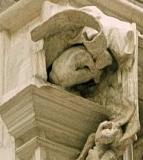 'The
Caryatid Carrying a Stone' was created probably as early as 1881. In 1886, it
was exhibited as a work in its own right in the Gallery Georges Petit.
According to Antoinette Le Norman-Romain, it was only included in
'The
Caryatid Carrying a Stone' was created probably as early as 1881. In 1886, it
was exhibited as a work in its own right in the Gallery Georges Petit.
According to Antoinette Le Norman-Romain, it was only included in 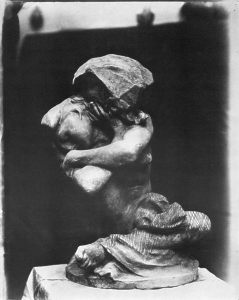 .
.
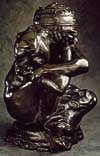
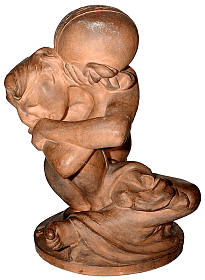 Truman
Bartlett, however, has pointed to a poem by Charles Baudelaire as the
literary inspiration for the work:
Truman
Bartlett, however, has pointed to a poem by Charles Baudelaire as the
literary inspiration for the work: 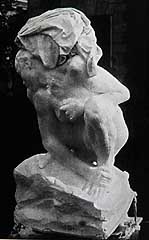
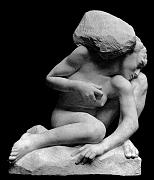 A photo by
Bulloz demonstrated how closely 'The Caryatid' is actually related to
A photo by
Bulloz demonstrated how closely 'The Caryatid' is actually related to